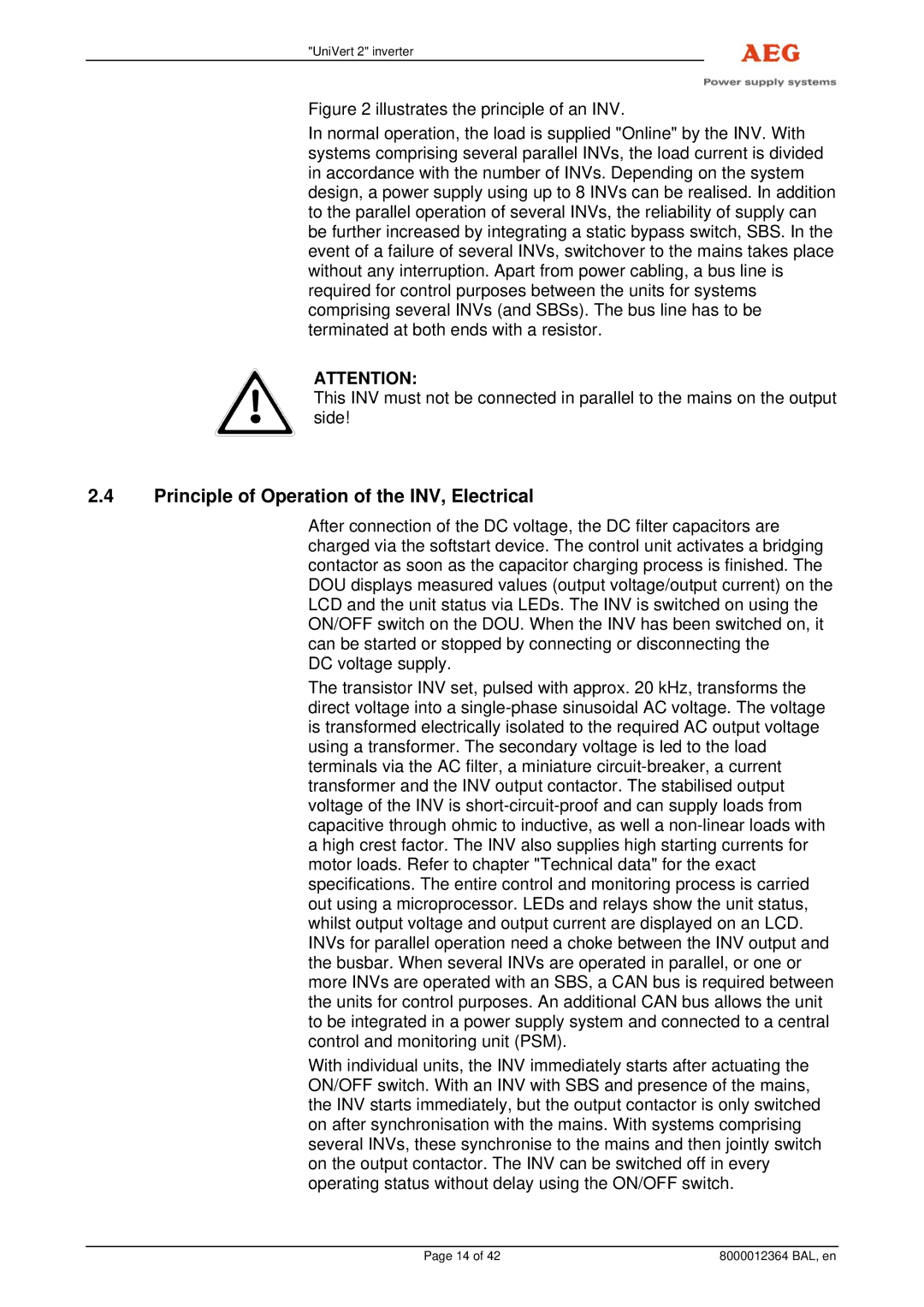
"UniVert 2" inverter
Figure 2 illustrates the principle of an INV.
In normal operation, the load is supplied "Online" by the INV. With systems comprising several parallel INVs, the load current is divided in accordance with the number of INVs. Depending on the system design, a power supply using up to 8 INVs can be realised. In addition to the parallel operation of several INVs, the reliability of supply can be further increased by integrating a static bypass switch, SBS. In the event of a failure of several INVs, switchover to the mains takes place without any interruption. Apart from power cabling, a bus line is required for control purposes between the units for systems comprising several INVs (and SBSs). The bus line has to be terminated at both ends with a resistor.
ATTENTION:
This INV must not be connected in parallel to the mains on the output side!
2.4Principle of Operation of the INV, Electrical
After connection of the DC voltage, the DC filter capacitors are charged via the softstart device. The control unit activates a bridging contactor as soon as the capacitor charging process is finished. The DOU displays measured values (output voltage/output current) on the LCD and the unit status via LEDs. The INV is switched on using the ON/OFF switch on the DOU. When the INV has been switched on, it can be started or stopped by connecting or disconnecting the
DC voltage supply.
The transistor INV set, pulsed with approx. 20 kHz, transforms the direct voltage into a
With individual units, the INV immediately starts after actuating the ON/OFF switch. With an INV with SBS and presence of the mains, the INV starts immediately, but the output contactor is only switched on after synchronisation with the mains. With systems comprising several INVs, these synchronise to the mains and then jointly switch on the output contactor. The INV can be switched off in every operating status without delay using the ON/OFF switch.
Page 14 of 42 | 8000012364 BAL, en |
